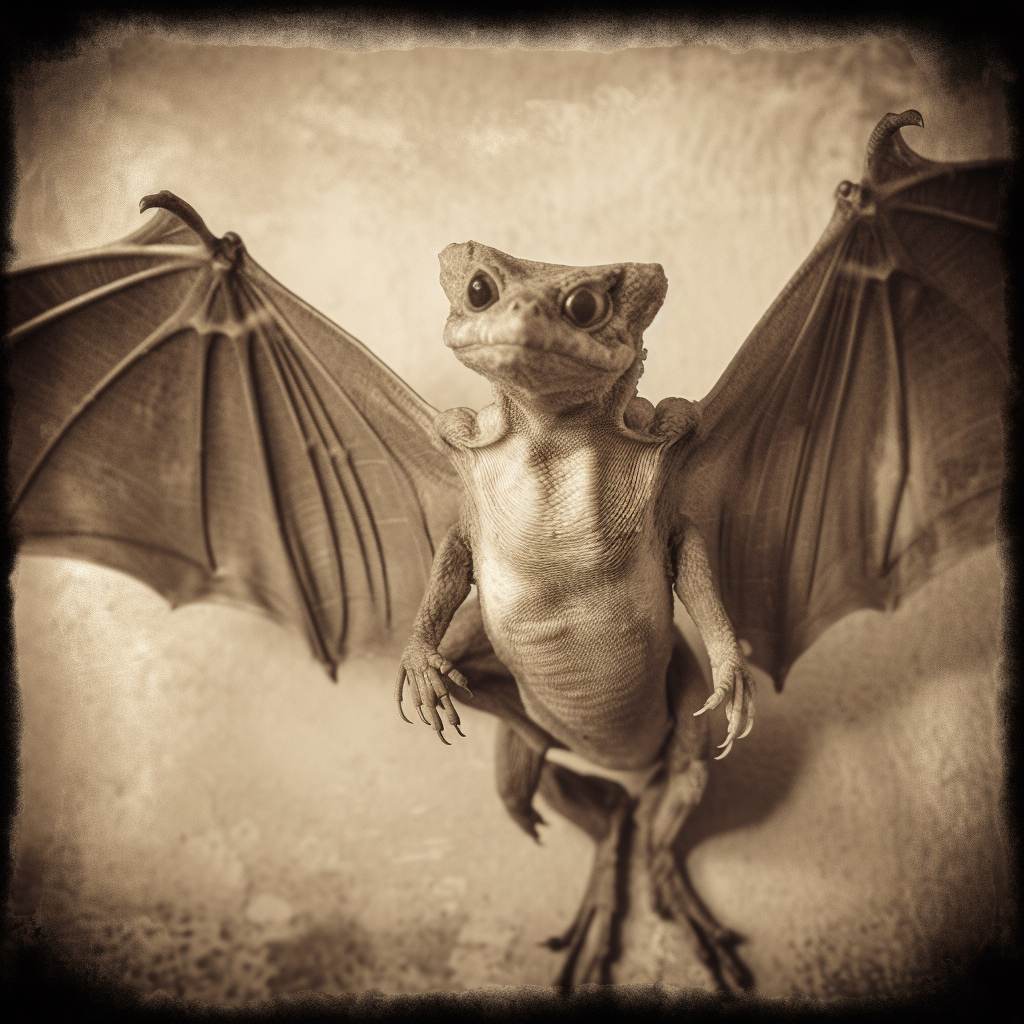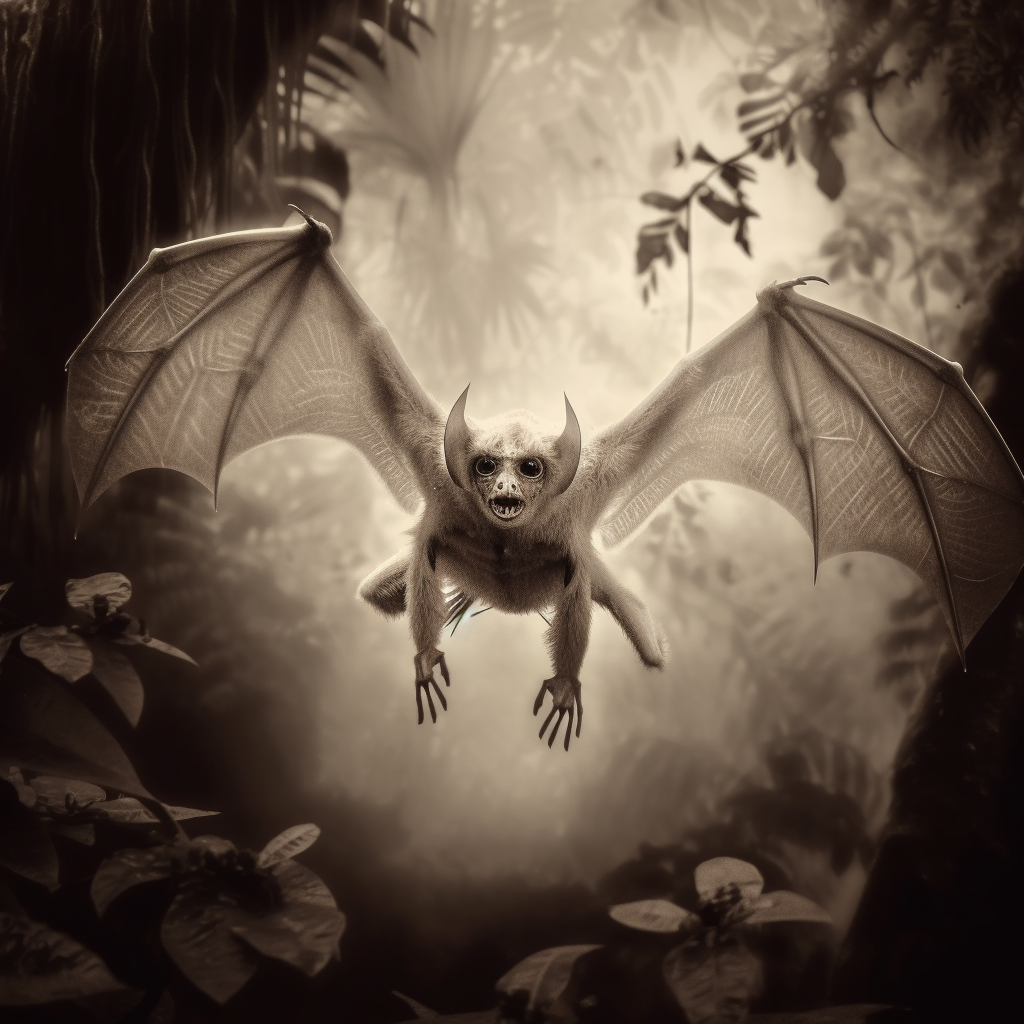
Ahool
Ahool is a cryptid, a creature that is said to inhabit the dense rainforests of Java in Indonesia. It is often described as a giant bat or a flying primate, and some accounts suggest that it may be a type of pterosaur or other prehistoric creature that has survived into the present day.
According to eyewitness reports, the Ahool is a large, bat-like creature with a wingspan of up to 10 feet (3 meters). Its body is covered in dark fur or feathers, and it has large, pointed ears and glowing red eyes. Some accounts describe it as having sharp teeth and a fierce, predatory demeanor.
Despite numerous reported sightings, there is no concrete evidence to support the existence of the Ahool, and it remains a subject of debate and speculation among cryptozoologists and enthusiasts of the paranormal.
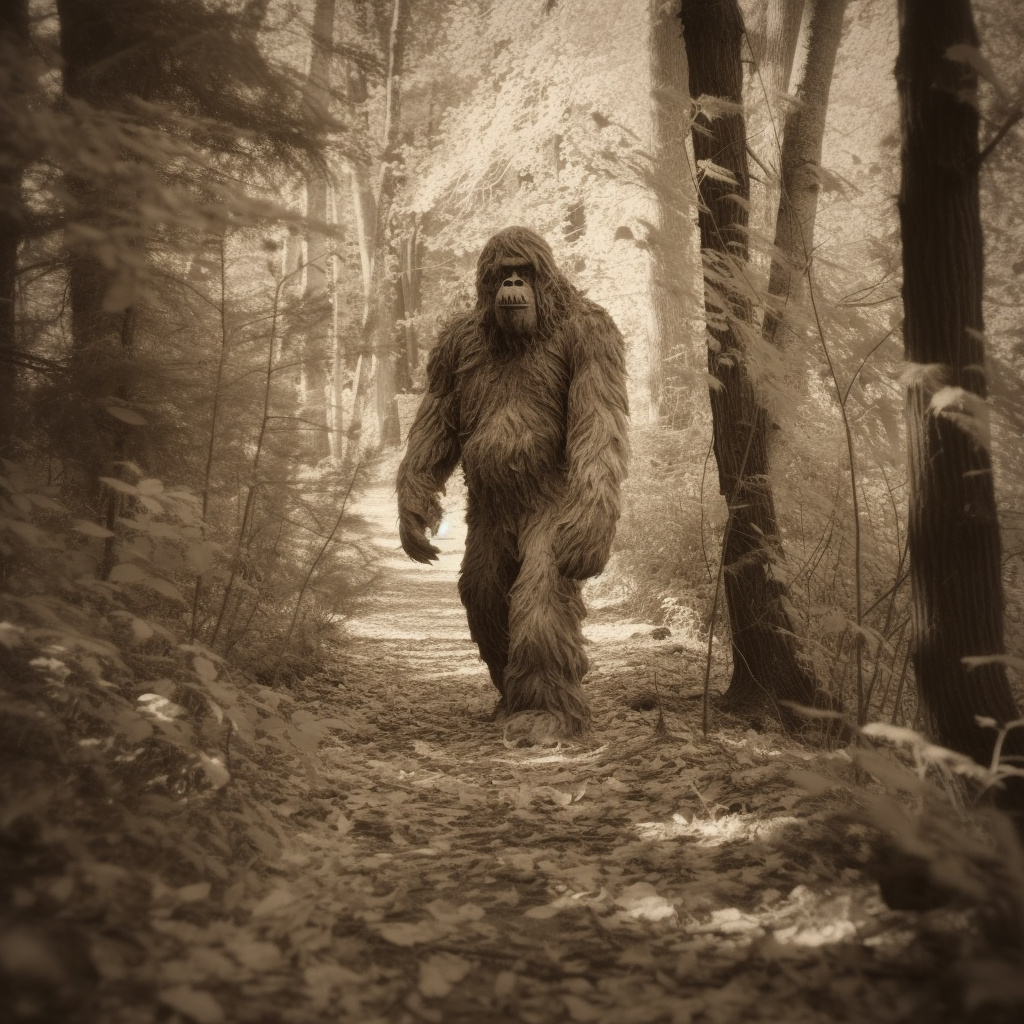
Bigfoot a/k/a/ Sasquatch
Bigfoot, also known as Sasquatch, is a legendary ape-like creature that is said to inhabit remote forests, mainly in the Pacific Northwest region of North America. There is no scientific evidence to support the existence of Bigfoot, and it is generally considered to be a folklore or mythological creature. However, many people believe in the existence of Bigfoot, and descriptions of the creature vary widely.
In general, Bigfoot is said to be a large, bipedal humanoid creature, standing anywhere from 6 to 10 feet tall and weighing between 500 and 1000 pounds. It is said to have a muscular and hairy body, with dark brown or reddish-brown hair covering most of its body. Its face is said to be flat and wide, with a prominent brow ridge, and its eyes are described as being deep-set and dark.
Bigfoot is often said to have long, powerful arms that hang down to its knees, and its hands are described as being large and ape-like. Its feet are said to be large and wide, with a distinctive footprint that is often cited as evidence of its existence. Some people also believe that Bigfoot has a distinct, unpleasant odor, similar to that of a skunk or wet dog.
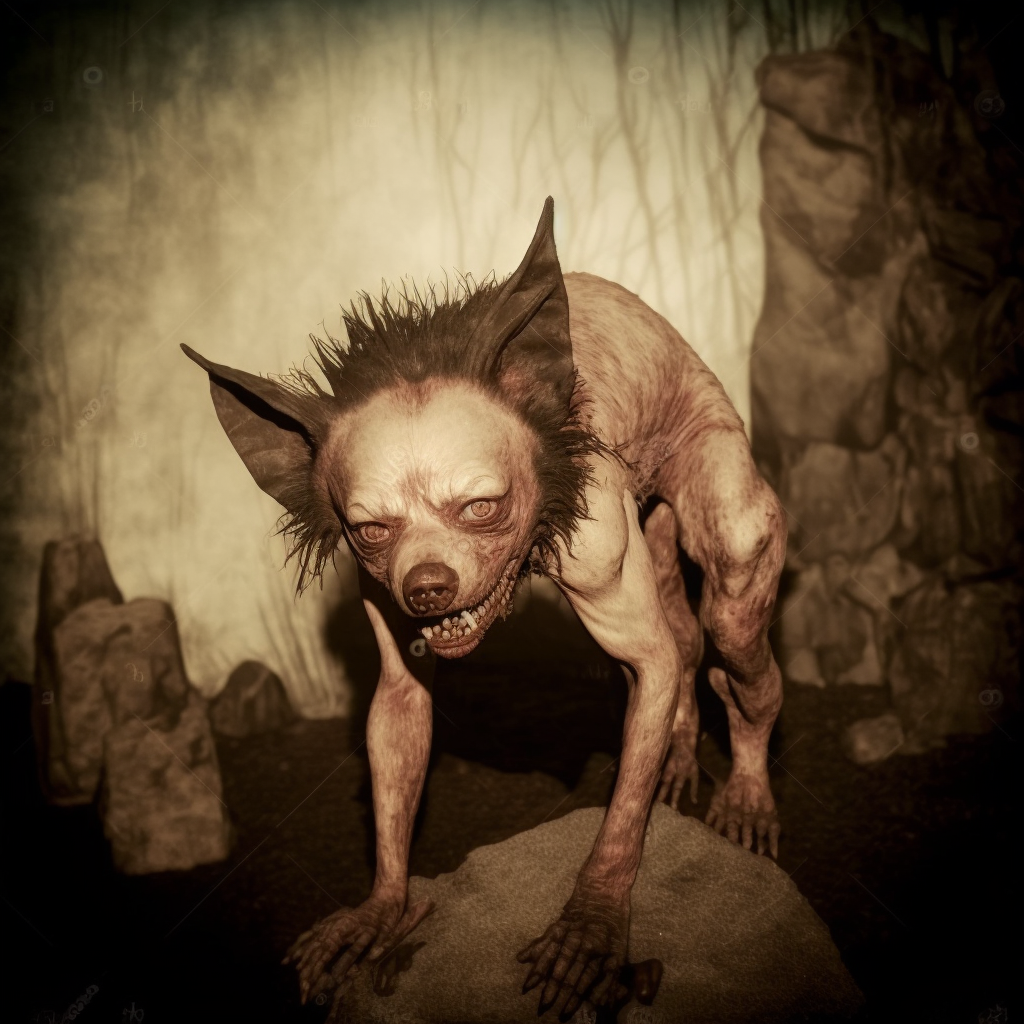
Chupacabra
The Chupacabra is a legendary creature that is said to inhabit parts of the Americas, primarily in Puerto Rico, Mexico, and the southwestern United States. The creature’s name literally means “goat-sucker” in Spanish, as it is said to attack and feed on the blood of livestock, especially goats. The appearance of the Chupacabra is often described as follows:
The Chupacabra is said to be a bipedal creature that stands between 3 and 5 feet tall, with a lean, muscular body covered in gray or greenish-gray skin. Its head is often described as being reptilian in appearance, with large, glowing red eyes, sharp fangs, and a long, pointed snout. It has spines or quills running down its back and its limbs are said to be long and thin.
The Chupacabra is also said to have large, bat-like wings, which it uses to fly or glide through the air. It is often depicted as having sharp claws on its hands and feet, and its back legs are said to be longer than its front legs. Witnesses have also reported that the creature emits a foul odor, similar to that of sulfur or ammonia.
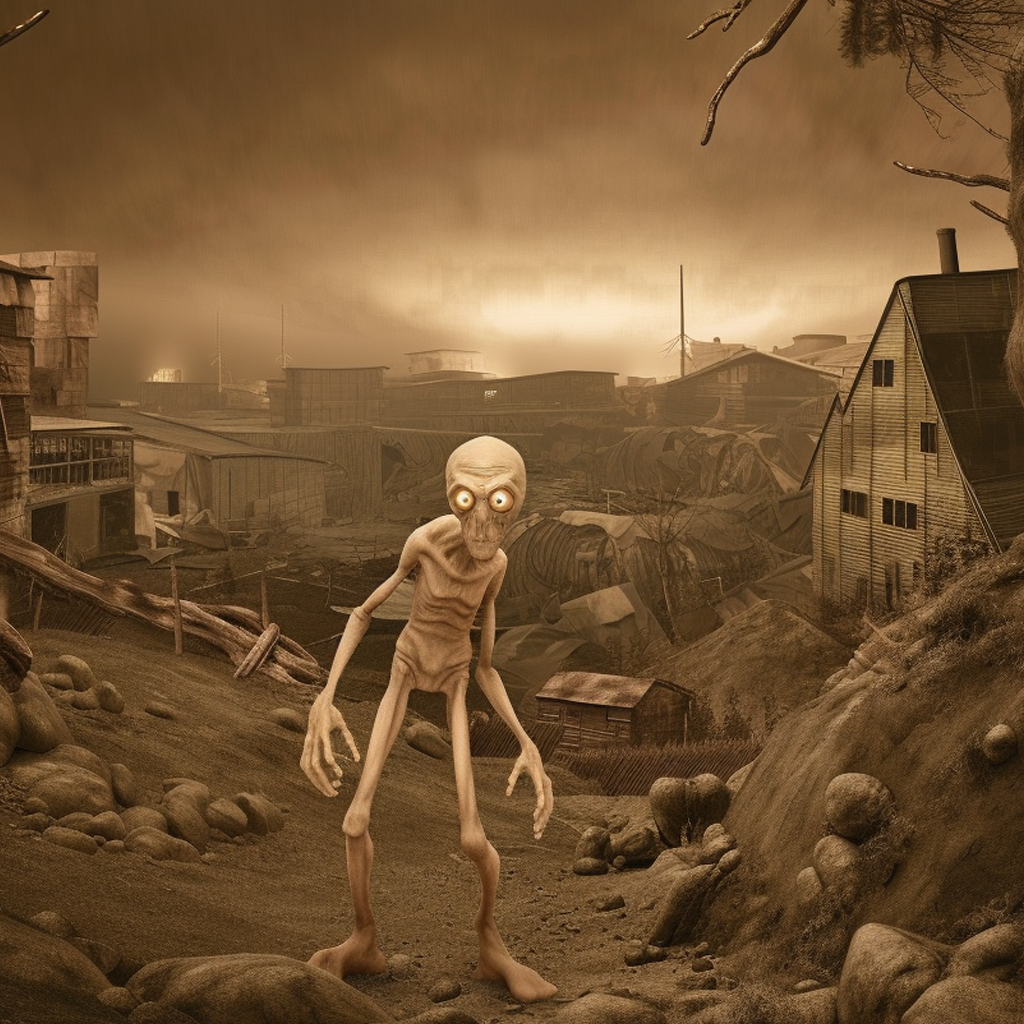
Dover Demon
The Dover Demon is a legendary creature that was reportedly sighted in Dover, Massachusetts, in the United States, in April 1977. The creature’s appearance is often described as follows:
The Dover Demon is said to be a small, humanoid creature standing between 3 and 4 feet tall, with a thin, spindly body and large, glowing eyes. Its skin is often described as being hairless and peach-colored or beige, and its head is said to be disproportionately large in comparison to its body. Witnesses reported that the creature’s eyes were orange or green and had a hypnotic quality that was difficult to look away from.
The Dover Demon is also said to have long, thin fingers and no visible ears, nose, or mouth. It was often described as having a large, watermelon-shaped head that appeared too big for its body, and its arms and legs were said to be abnormally long and slender. Witnesses reported that the creature moved in a quick, jerky manner, and seemed to be unaffected by the cold or wet weather conditions of the night it was sighted.
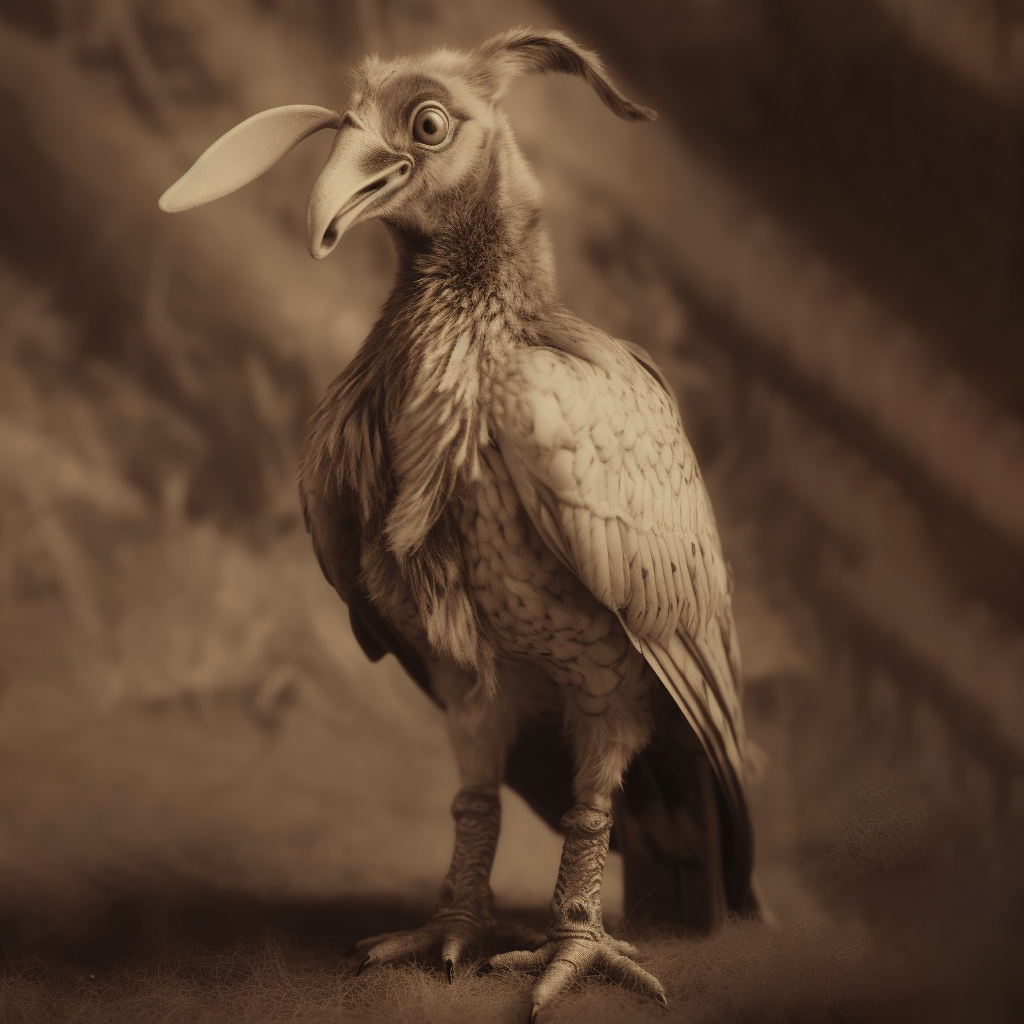
Elwetritsch
The Elwetritsch is a legendary creature from German folklore, said to inhabit the forests of the Palatinate region in southwestern Germany. The creature is described as a small, bird-like animal with sharp teeth and spiky hair. It is said to have the body of a chicken, the wings of a bat, and the head of a rabbit, with a long, slender beak.
According to legend, the Elwetritsch is a nocturnal creature that is difficult to spot, as it is very quick and agile. It is said to live in groups and to be attracted to shiny objects. The Elwetritsch has become a popular figure in local folklore, and there are several festivals and events dedicated to the creature in the Palatinate region.
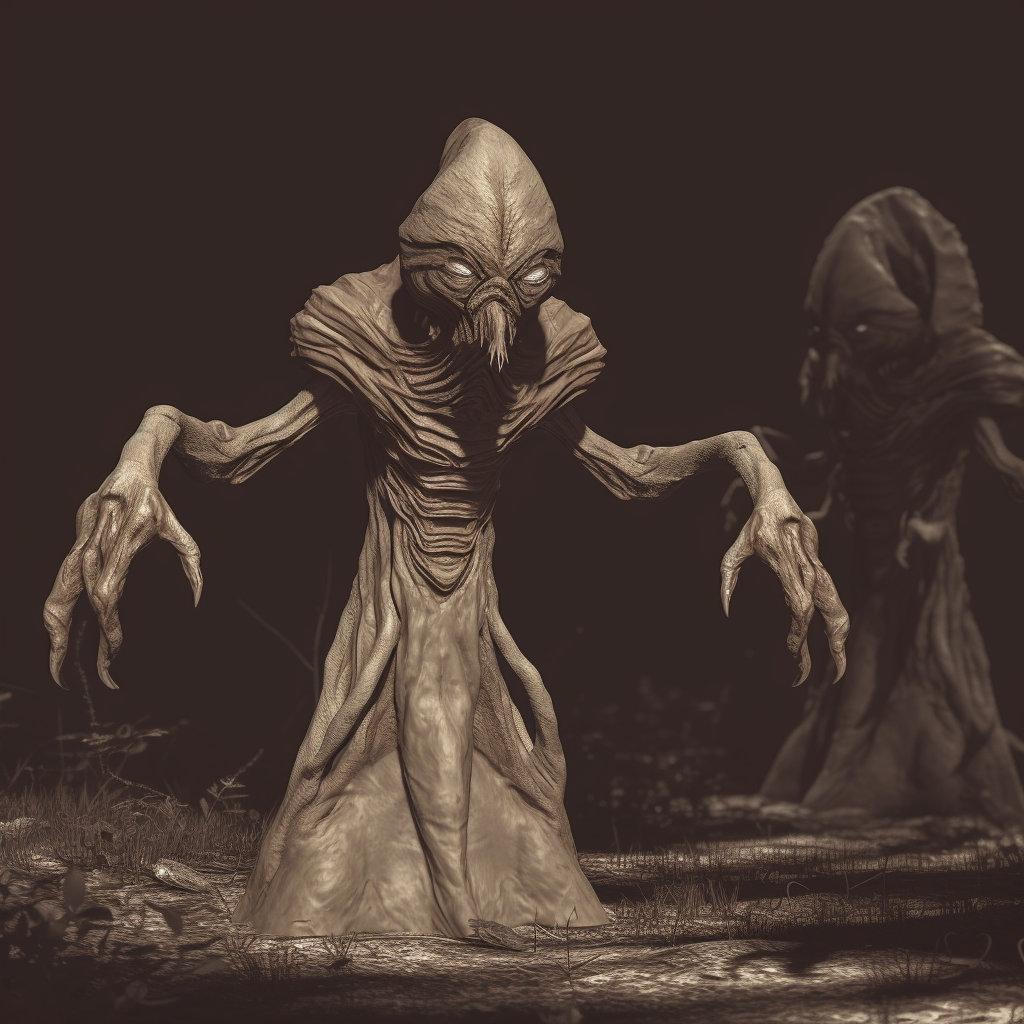
Flatwoods Monster
The Flatwoods Monster, also known as the Braxton County Monster or the Phantom of Flatwoods, is a legendary creature that was reportedly sighted in the town of Flatwoods, West Virginia, in the United States, in September 1952. The creature’s appearance is often described as follows:
The Flatwoods Monster is said to be a tall, humanoid creature standing between 7 and 10 feet tall, with a large, spade-shaped head and glowing, almond-shaped eyes that emitted a bright green light. Witnesses reported that the creature had a dark, metallic-looking body that resembled an elongated diamond, with a pointed top and bottom. It was said to be wearing a cowl or hood-like garment that draped over its body, giving it a spindly, insect-like appearance.
The creature’s arms were described as long, thin, and claw-like, and it appeared to have no discernible legs or feet. Witnesses reported that it moved in a gliding or hovering motion, seemingly unaffected by the steep hill it was seen on. Witnesses also reported a strong, pungent odor, similar to that of sulfur or burnt rubber.
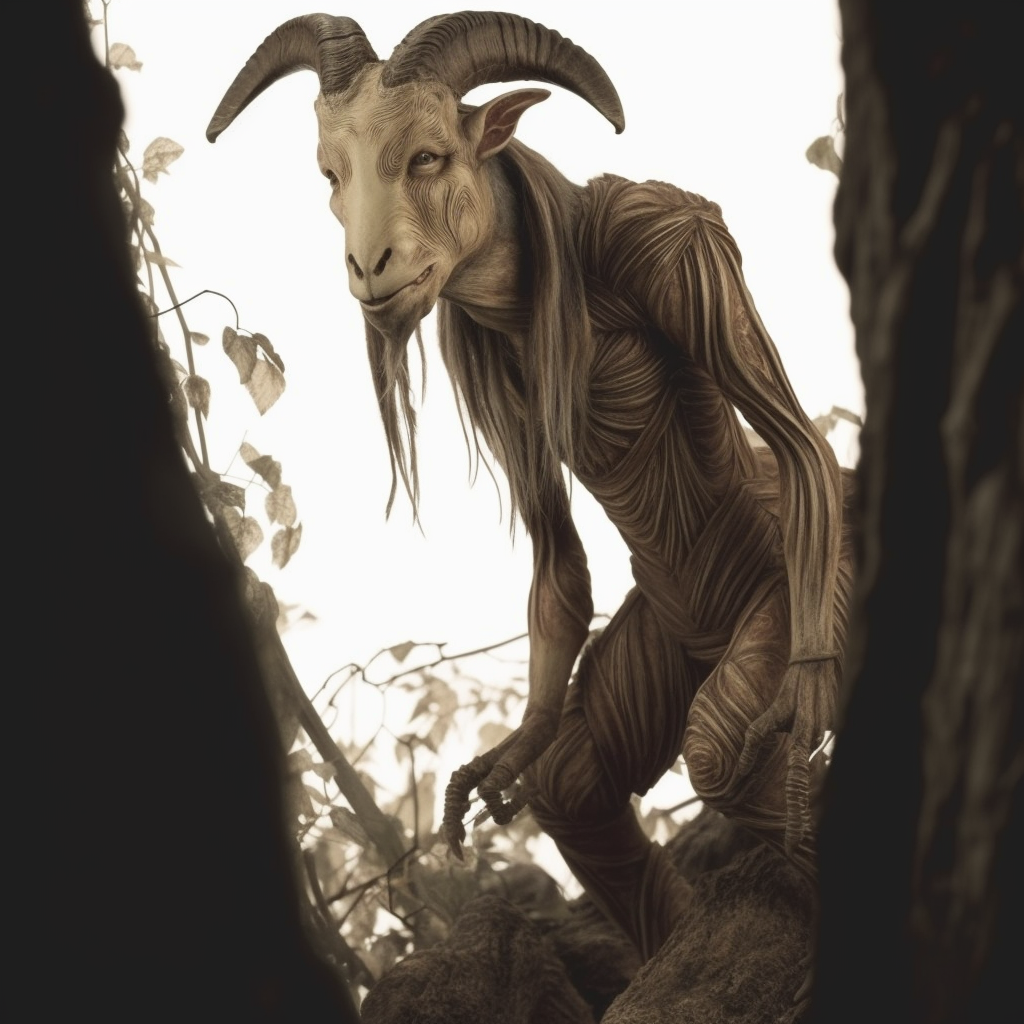
The Goatman
The Goatman is a legendary creature that has been reported in various parts of the United States, including Maryland, Texas, and Kentucky. The creature’s appearance is often described as a hybrid between a human and a goat, with features that are reminiscent of both.
The Goatman is said to be a tall, muscular creature with fur-covered legs, a human-like torso, and the head of a goat. Its skin is often described as being leathery or scaly, and it has large, sharp teeth and glowing, red or yellow eyes. Witnesses have reported that the Goatman emits a foul odor, similar to that of a decaying animal or sulfur.
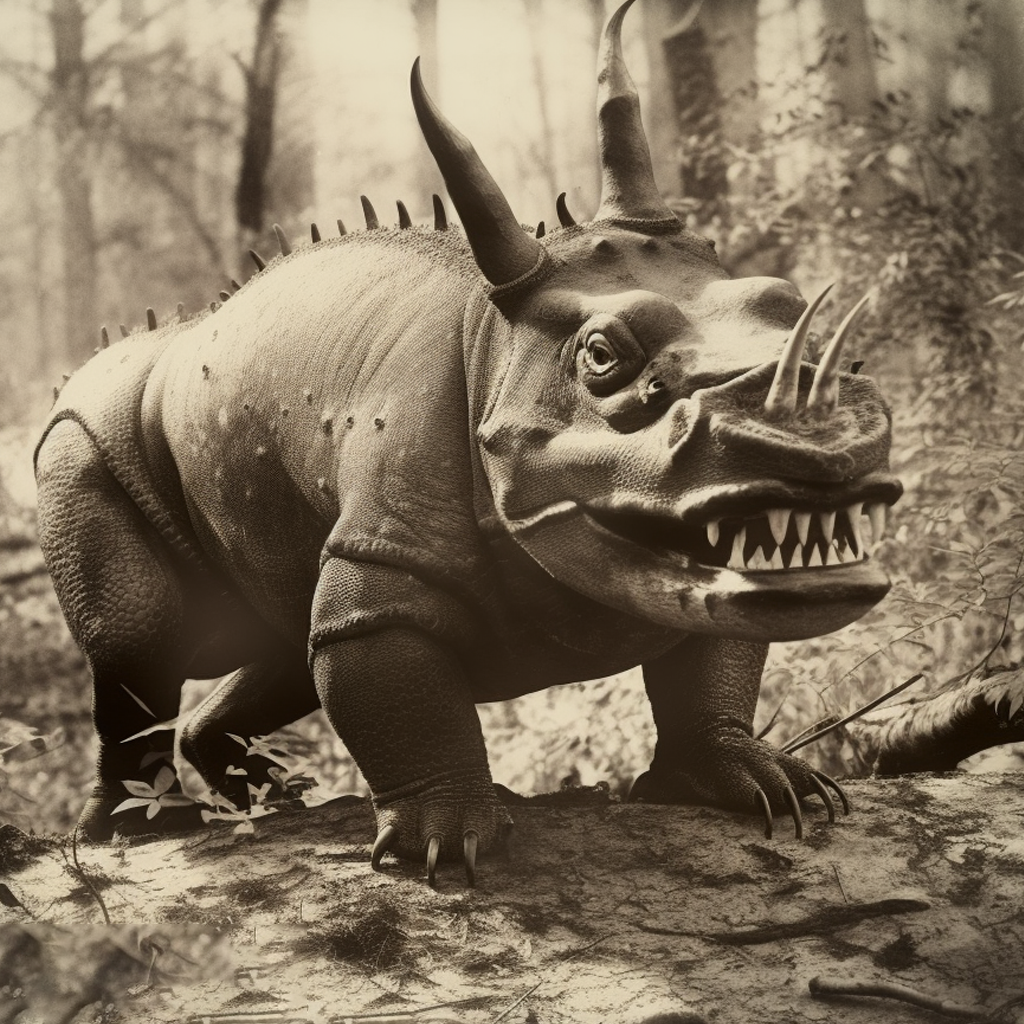
Hodag
The Hodag is a legendary creature from the folklore of the northern United States, particularly Wisconsin. The creature’s appearance is often described as a mix of various animals, including a bulldog, a rhinoceros, and a dinosaur.
The Hodag is said to be a large, fierce animal with a green or brown scaly hide, short legs, and a thick, powerful tail. It has sharp claws and a row of horns or spines along its back. The creature’s head is often described as being similar to that of a bulldog, with a wide, toothy grin and prominent fangs. Its eyes are said to glow red in the dark.
According to legend, the Hodag is a fearsome predator that is difficult to kill, and is known for its ability to breathe fire. The creature is said to inhabit the forests of Wisconsin, particularly in the Rhinelander area, and has become a popular figure in local folklore. In the town of Rhinelander, there is a statue of the Hodag and an annual festival dedicated to the creature. While many believe the Hodag to be a fictional creation, there have been occasional reports of sightings over the years.

Indrid Cold (The Grinning Man)
Indrid Cold, also known as the “Grinning Man,” is a humanoid cryptid that was first reported in the United States in the 1960s. The creature’s appearance is often described as follows:
Indrid Cold is said to be a tall, thin, humanoid figure standing between 6 and 7 feet tall, with an unusually broad smile that stretches from ear to ear. Witnesses have reported that the creature’s skin is gray or greenish in color, and that it appears to be wearing a metallic or reflective suit that reflects light. The suit is often described as being seamless and form-fitting, with no visible openings or seams.
The creature’s eyes are said to be large and bulging, with no discernible pupils or irises. Its nose and mouth are often described as being small or non-existent, and it has long, thin fingers with sharp, pointed nails. Witnesses have reported that the creature communicates telepathically and that its voice sounds robotic or mechanical.
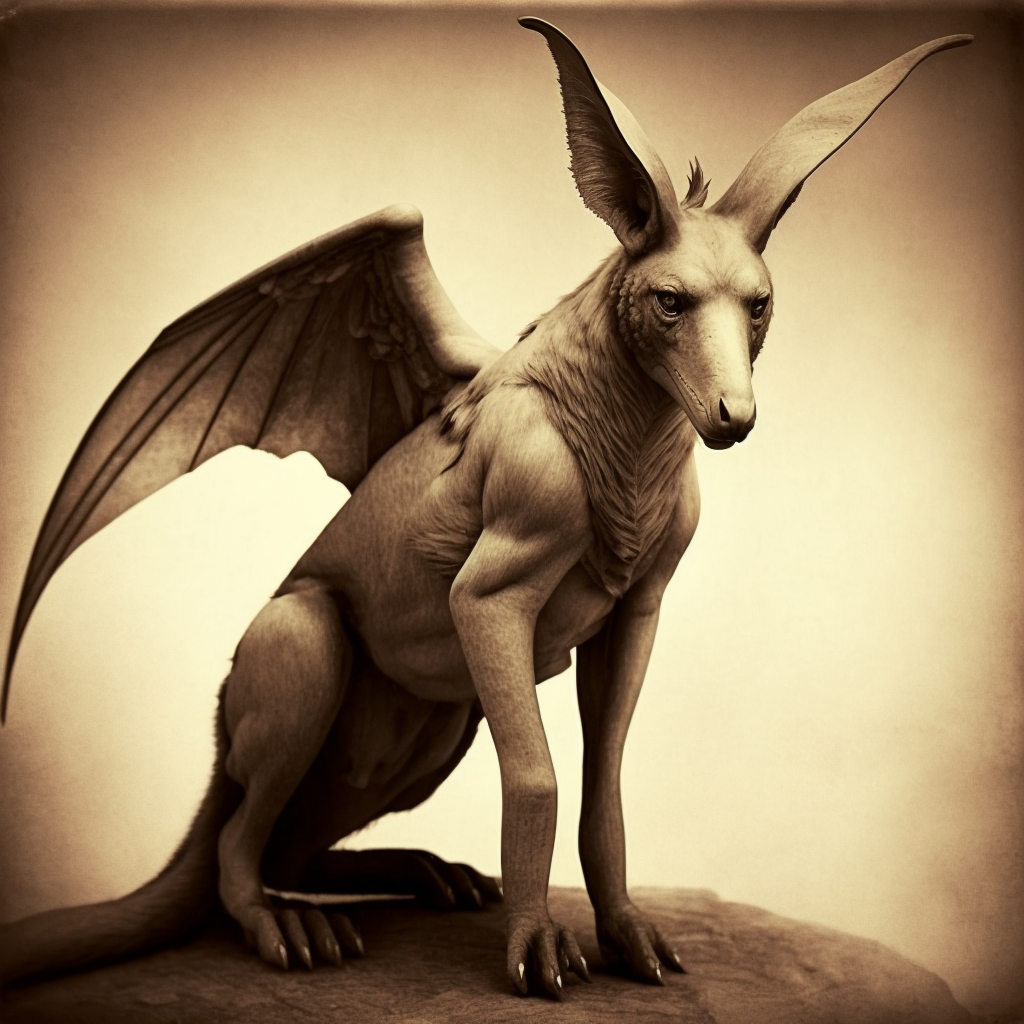
Jersey Devil
The Jersey Devil is a legendary creature from the Pine Barrens region of southern New Jersey in the United States. The creature’s appearance is often described as a mix of various animals, with some variations in the details of its features.
The Jersey Devil is generally described as a creature with a horse-like head, bat-like wings, and a long, serpentine tail. It has hooves instead of feet, and sharp claws on its hands. Its body is often described as being similar to that of a kangaroo, with powerful hind legs and a muscular build. Its fur or scales are usually described as being dark in color, with some accounts suggesting that it glows red in the dark.
According to legend, the Jersey Devil was born to a woman named Mother Leeds, who cursed her thirteenth child before it was born. The creature is said to inhabit the Pine Barrens region of New Jersey, and has been the subject of numerous sightings and reports over the years.
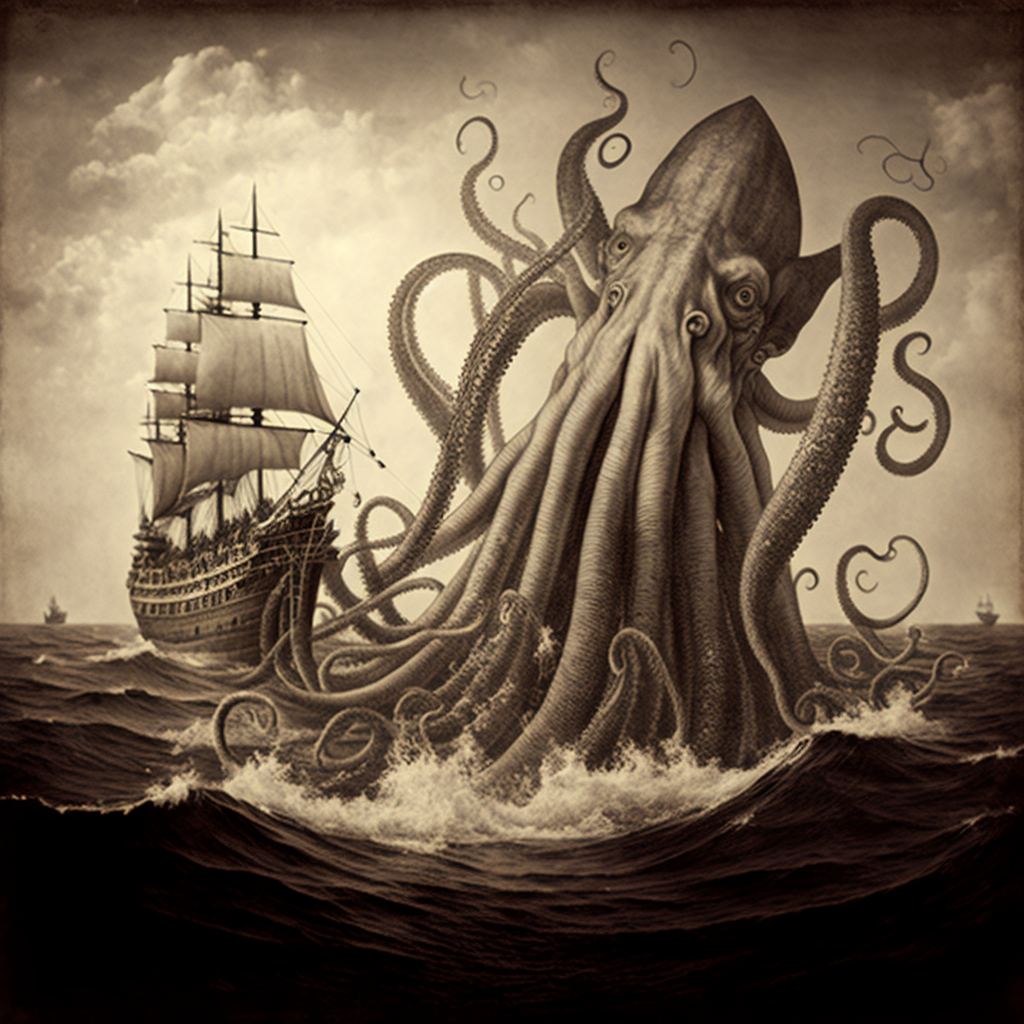
Kraken
The Kraken is a legendary sea monster from Scandinavian folklore that is often depicted as a giant octopus or squid. Its appearance varies depending on the source, but it is generally described as a massive, tentacled creature that can reach up to several hundred feet in length.
The Kraken’s body is typically described as being bulbous or rounded, with long, powerful tentacles that can reach out and grab prey. Its skin is often depicted as being slimy and covered in suckers, which the creature uses to hold onto its victims. The Kraken’s head is usually not well defined, as its many tentacles make it difficult to discern a distinct head.
According to legend, the Kraken is capable of creating massive whirlpools that can sink ships, and is said to have an insatiable appetite for sailors and their vessels. It has been depicted in numerous works of literature, art, and film, and remains a popular figure in maritime mythology.
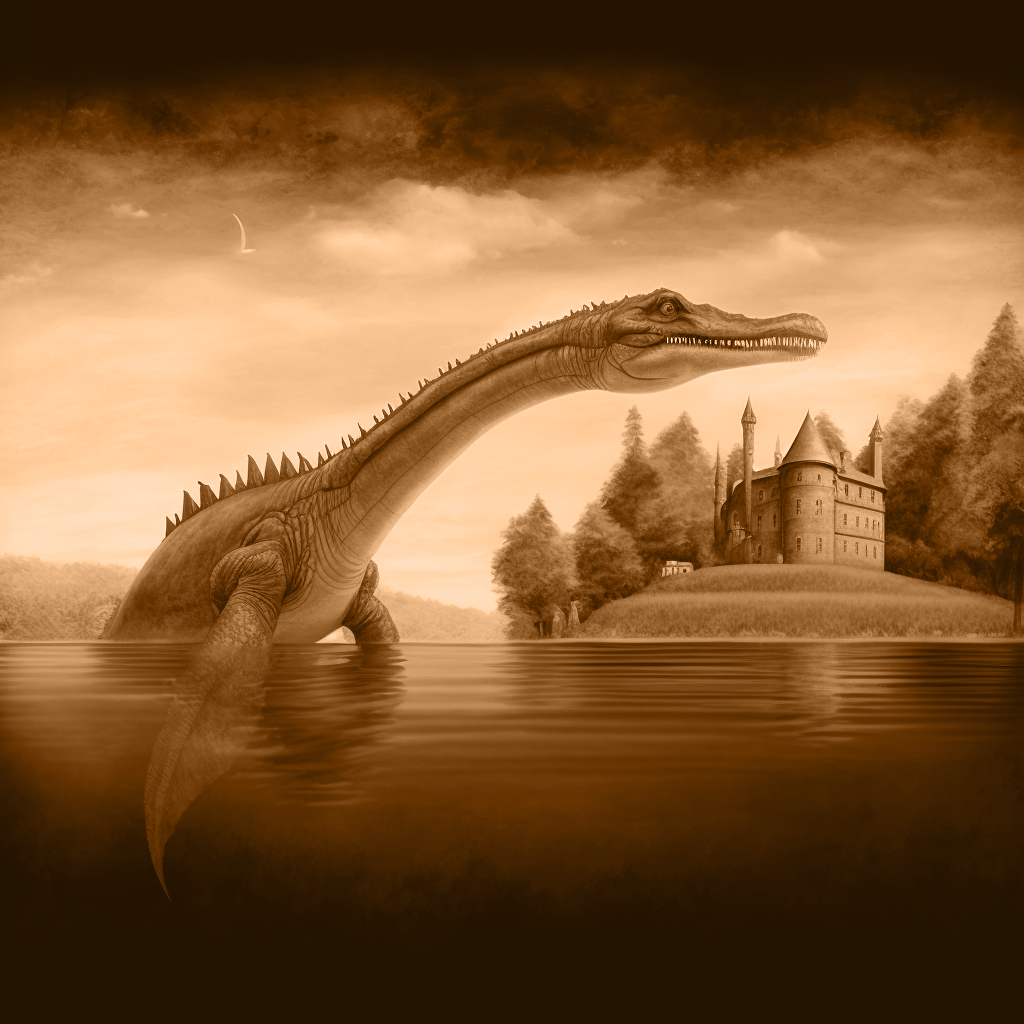
Loch Ness Monster (a/k/a Nessie)
The Loch Ness Monster, or Nessie, is a legendary creature said to inhabit the waters of Loch Ness in Scotland. Its appearance is often described as follows:
Nessie is typically depicted as a large, long-necked creature with a serpentine body, similar to that of a plesiosaur. It is said to be anywhere from 20 to 40 feet in length, with a dark, scaly skin and a long, thin neck that emerges from the water. Its head is often described as being similar to that of a horse or a snake, with large eyes and a broad mouth full of sharp teeth.
There have been numerous sightings of Nessie over the years, with many claiming to have seen the creature’s long neck and humped back emerging from the water. Some have even claimed to have seen multiple humps, suggesting that Nessie may have more than one hump on its back.
Despite the many reported sightings, there has been no conclusive evidence of the existence of the Loch Ness Monster. Some researchers believe that the sightings may be the result of misidentified animals or optical illusions, while others continue to search for evidence of Nessie’s existence in the depths of Loch Ness.
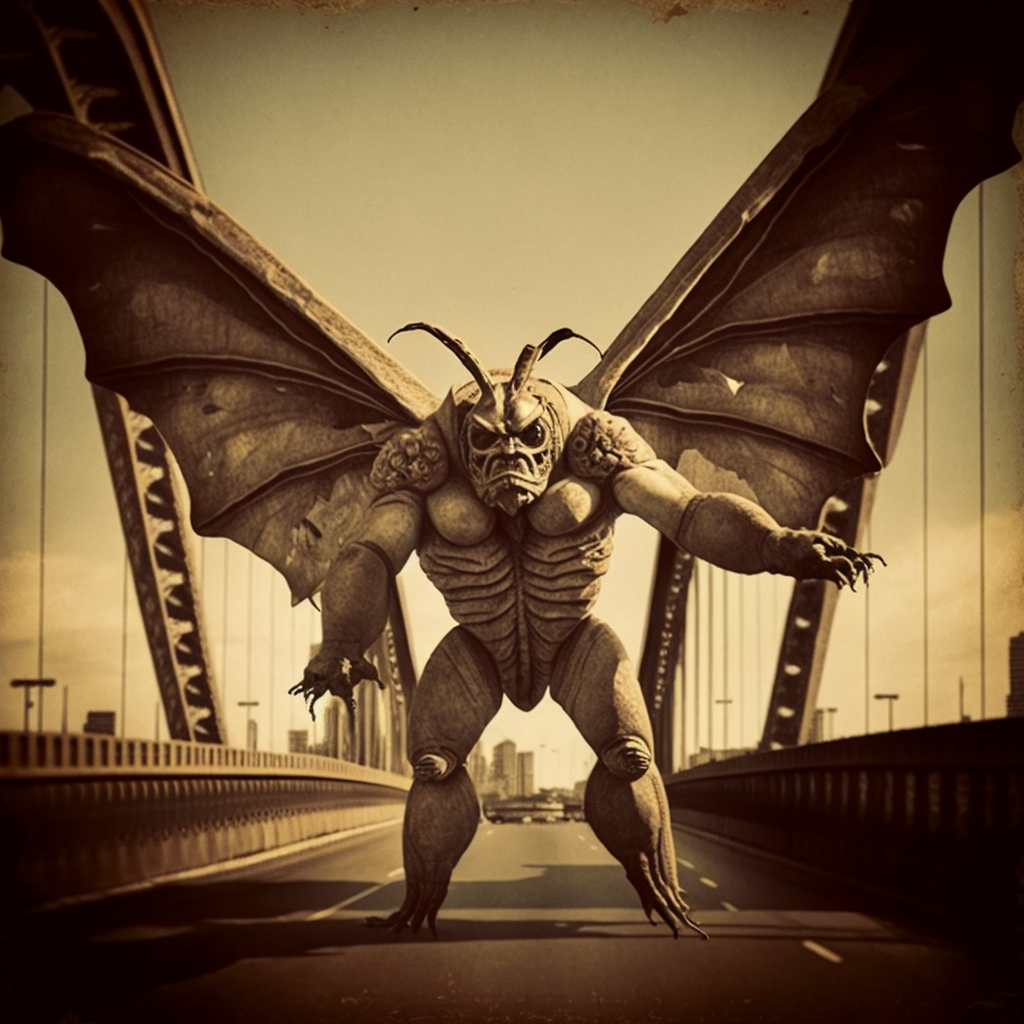
Mothman
The Mothman is a legendary creature from West Virginia in the United States, first sighted in the 1960s. It is typically described as follows:
The Mothman is said to be a large, humanoid creature with wings like those of a moth or a bat. It is usually depicted as standing around 7 feet tall, with a wingspan of up to 10 feet. Its body is usually described as being muscular and covered in gray or brown fur, with large, glowing red eyes set deep in its head.
Many eyewitnesses have reported seeing the Mothman flying through the air, sometimes hovering in place or darting back and forth at high speed. Its wings are often described as being bat-like or feathered, with a span that can exceed that of a small aircraft.
According to legend, the Mothman is a harbinger of doom, appearing before major disasters or tragic events. Some believe that it is a supernatural entity, while others suggest that it may be a previously unknown species of animal or a misidentified bird.
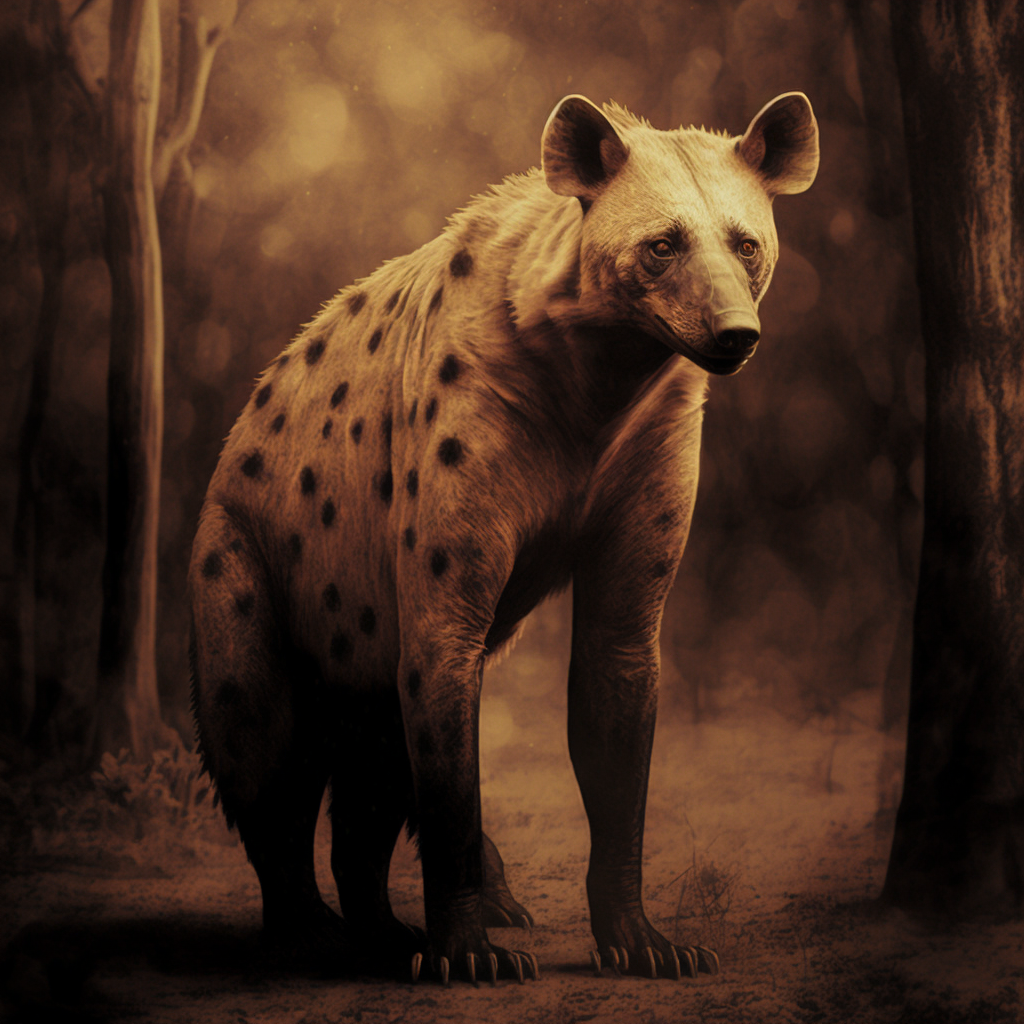
Nandi Bear
he Nandi Bear is a cryptid creature that is said to inhabit the dense forests and mountainous regions of East Africa, particularly in Kenya. Its appearance is often described as follows:
The Nandi Bear is typically described as a large, bear-like animal with shaggy fur and powerful jaws. Its body is usually said to be dark in color, with a hunched back and a distinctive sloping profile. Its head is often described as being somewhat similar to that of a hyena, with a broad muzzle, large teeth, and powerful jaws.
According to legend, the Nandi Bear is an extremely aggressive and dangerous creature that is known to attack both humans and livestock. It is said to be able to stand on its hind legs and use its powerful jaws to rip apart its prey. Its size is often reported to be between 6 and 9 feet long, with some reports suggesting that it may weigh up to 500 pounds.
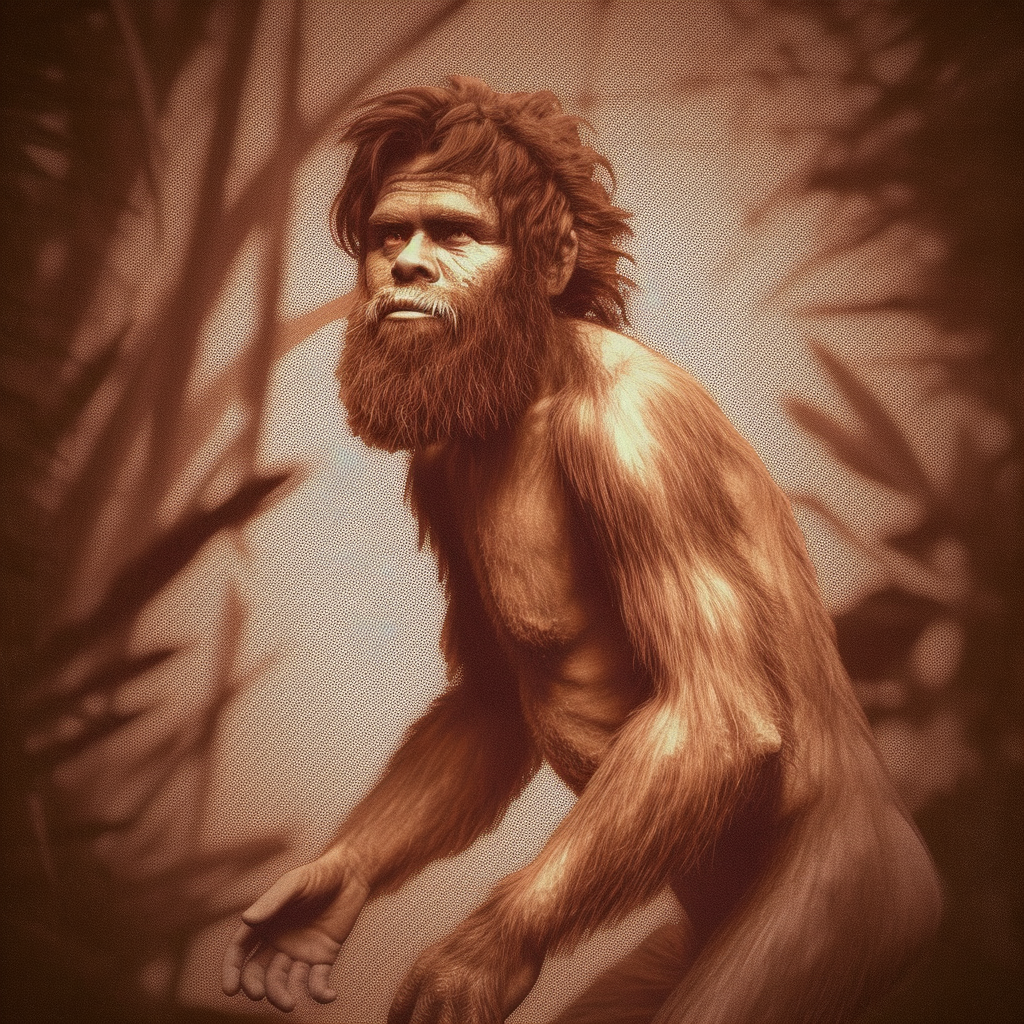
Orang Pendek
The Orang Pendek is a cryptid creature that is said to inhabit the dense rainforests of Sumatra, Indonesia. Its appearance is often described as follows:
The Orang Pendek is typically described as a small, bipedal ape-like creature, standing between 3 and 5 feet tall. Its body is covered in short, brown or black hair, and it has broad shoulders and powerful arms. Its face is often said to be somewhat human-like, with a flat nose, wide mouth, and large, expressive eyes.
The creature is known for its agility and ability to move quickly through the forest, often evading human observers with ease. It is said to be extremely shy and elusive, making it difficult to study or photograph.
Some researchers suggest that the creature may be a previously unknown species of primate, while others believe that it may be a surviving population of a known species, such as the orangutan or the gibbon.
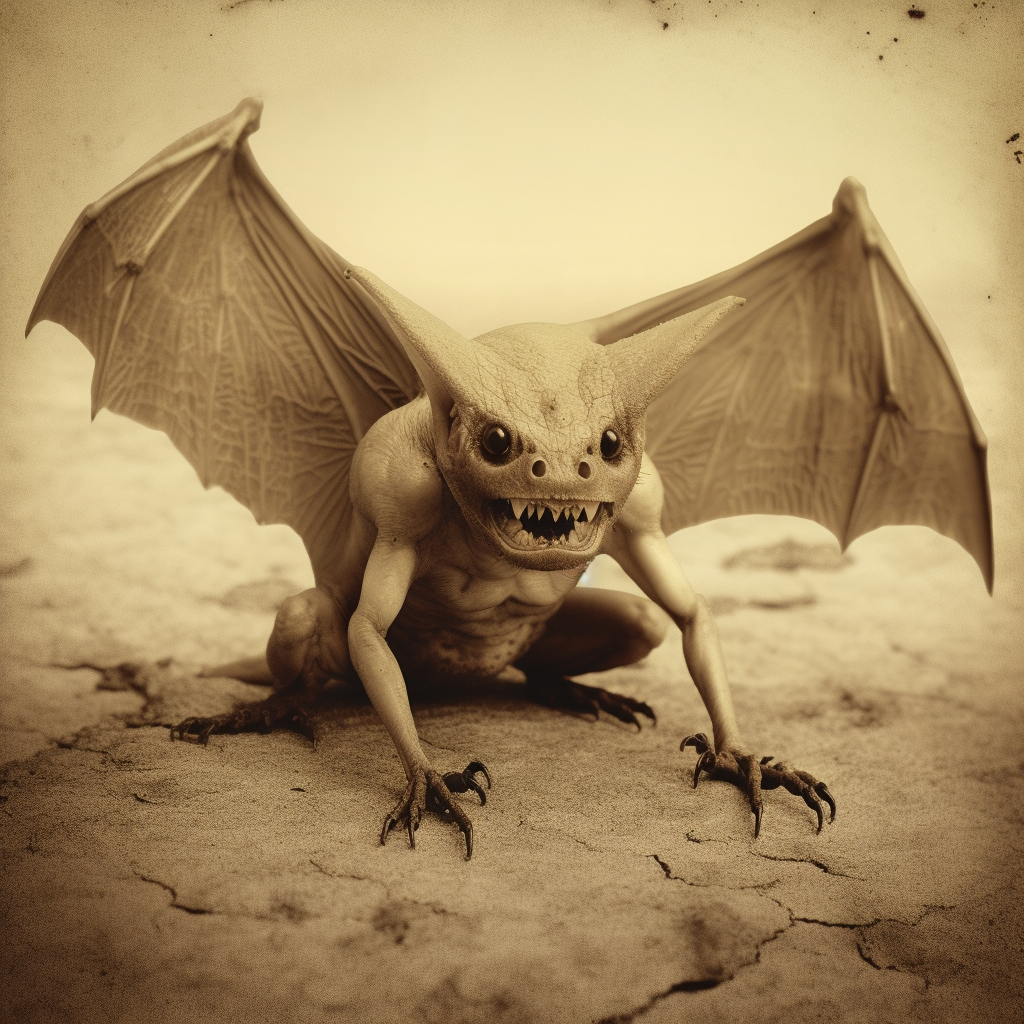
Popobawa
The Popobawa is a cryptid creature that is said to inhabit the Pemba Island in Tanzania. Its appearance is often described as follows:
The Popobawa is typically described as a small, dark creature, similar to a bat or a goblin. Its body is covered in short, dark fur or scales, and it has large, leathery wings and sharp claws. Its face is often said to be somewhat human-like, with a flat nose, wide mouth, and large, glowing eyes.
The creature is known for its ability to shape-shift and appear in various forms, making it difficult to describe its true appearance. It is said to be extremely cunning and malicious, often attacking and terrorizing human victims in the night.
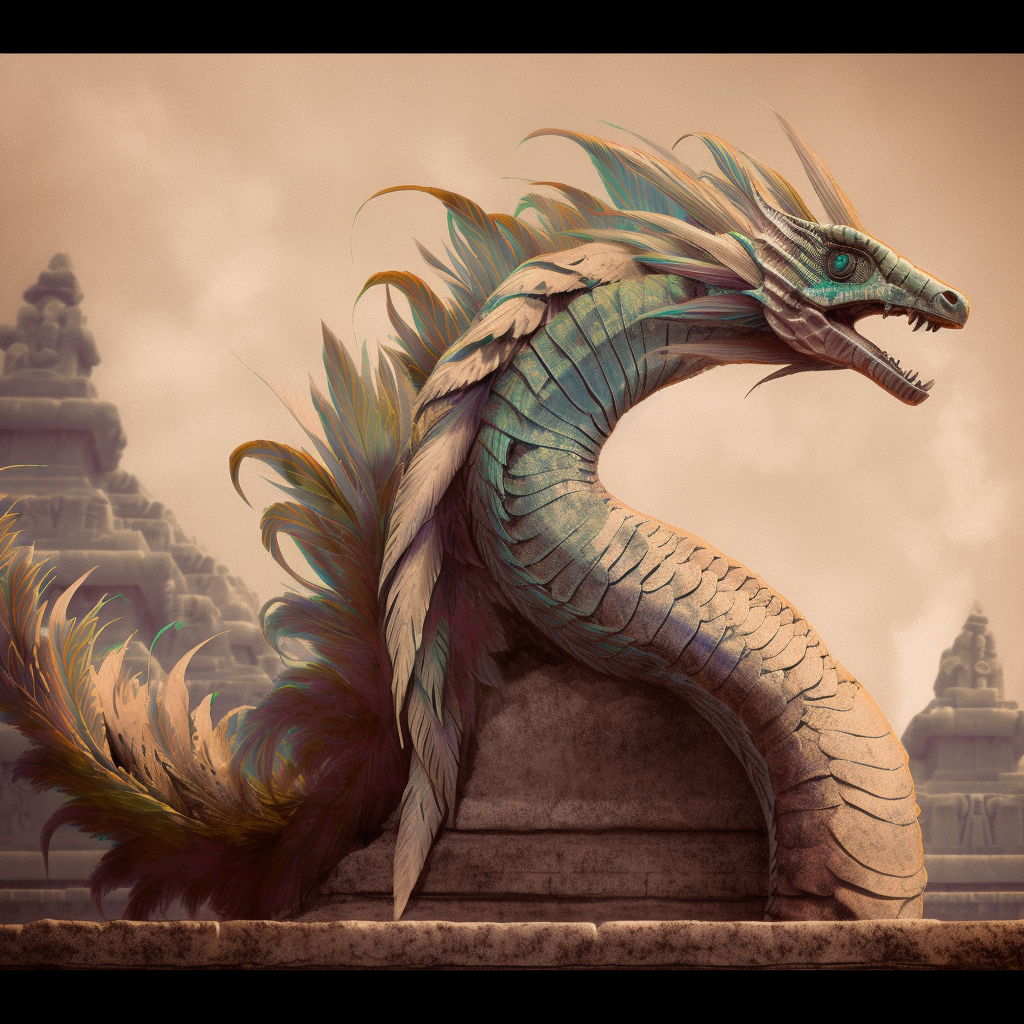
Quetzalcoatl
Quetzalcoatl is a Mesoamerican deity of Aztec mythology, often depicted as a serpent or a feathered serpent. In Aztec art and iconography, Quetzalcoatl is typically portrayed as a serpent with feathers or a feathered serpent with a long, curved beak.
The feathered serpent is usually depicted with bright colors, including green, yellow, and red, and with a body covered in feathers that resemble those of a quetzal bird, which is where the deity’s name comes from. Its serpent form is often shown with a serpent’s head, large round eyes, and fangs.
In some depictions, Quetzalcoatl is shown wearing a headdress or a crown of feathers, as well as other adornments such as earplugs, bracelets, and necklaces. The deity is also sometimes shown holding various objects, such as a shield or a staff, and often surrounded by symbols of nature, such as flowers, trees, and animals.
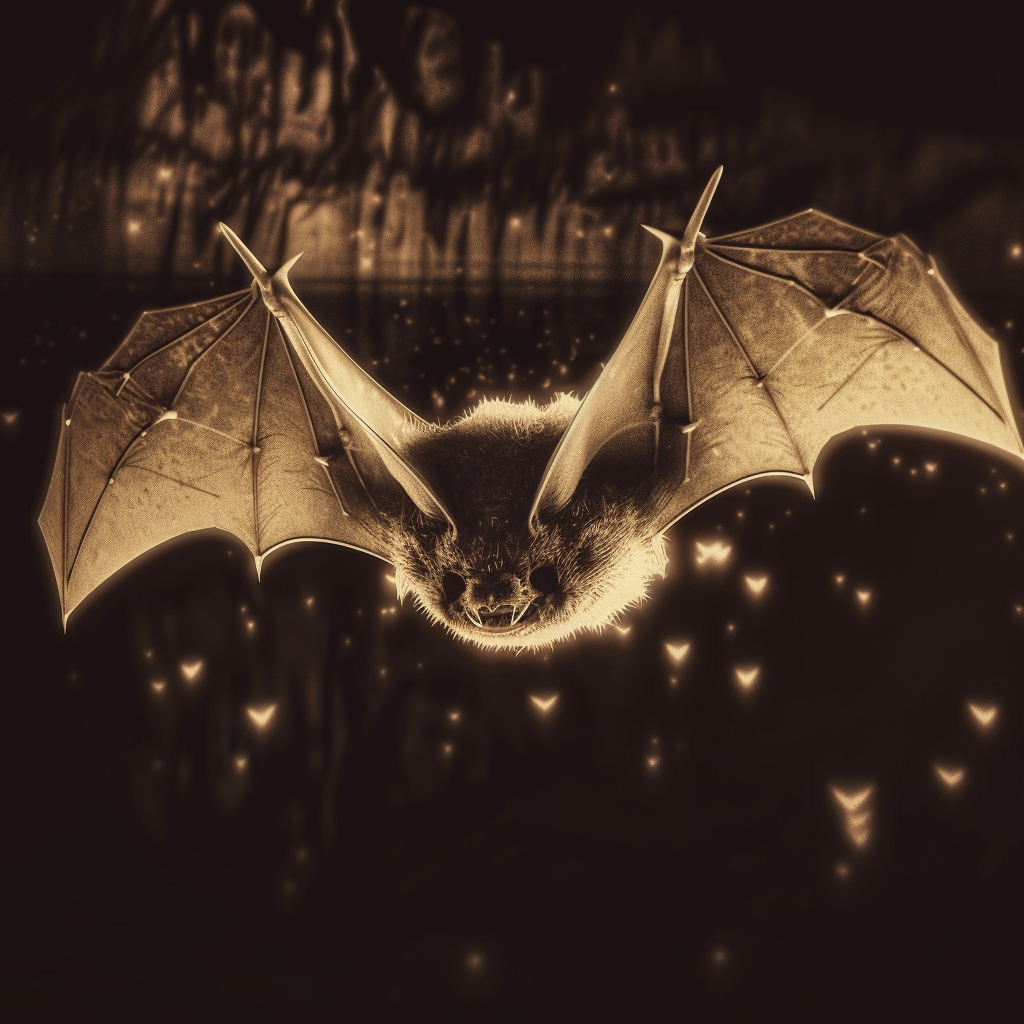
Ropen
The Ropen is a cryptid creature that is said to inhabit the skies over Papua New Guinea. Its appearance is often described as follows:
The Ropen is typically described as a large, bat-like creature, with leathery wings and a long, pointed tail. Its body is covered in short, brown or black fur, and it has large, sharp claws and a wide mouth filled with sharp teeth. Its eyes are often said to glow in the dark, and it is capable of emitting a bright, bioluminescent light from its body.
The creature is known for its ability to fly great distances at high speeds, often leaving a trail of bright light in its wake. It is said to be extremely aggressive and predatory, attacking and killing livestock and even humans.
Some researchers suggest that the creature may be a large species of fruit bat, while others believe that it may be a surviving population of a pterosaur, a type of flying reptile that is believed to have gone extinct millions of years ago.
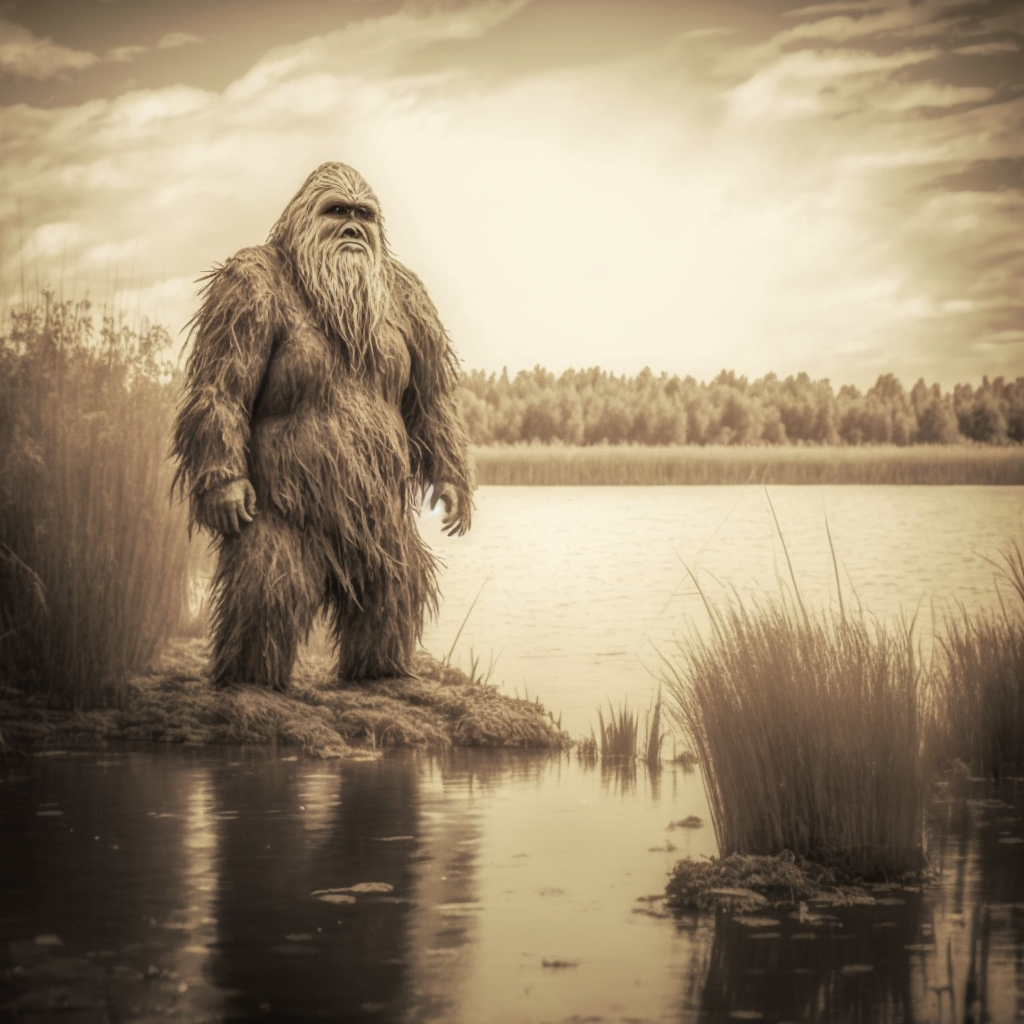
Skunk Ape
The Skunk Ape is a cryptid creature that is said to inhabit the swamps and forests of Florida, United States. Its appearance is often described as follows:
The Skunk Ape is typically described as a large, ape-like creature, standing between 5 and 7 feet tall and weighing between 300 and 500 pounds. Its body is covered in long, dark hair or fur, and it has a powerful build with broad shoulders and muscular arms and legs. Its face is often described as being similar to that of an ape or a gorilla, with a broad, flat nose, deep-set eyes, and a protruding brow ridge.
The creature is known for its strong, unpleasant odor, which is said to resemble the smell of a skunk, hence the name “Skunk Ape.” It is said to be a reclusive and elusive creature, rarely seen by humans, but occasionally leaving behind large footprints or other evidence of its presence.
Some researchers suggest that the creature may be a misidentification of other known animals, such as bears or feral pigs, while others believe that it may be a new, undiscovered species of primate.
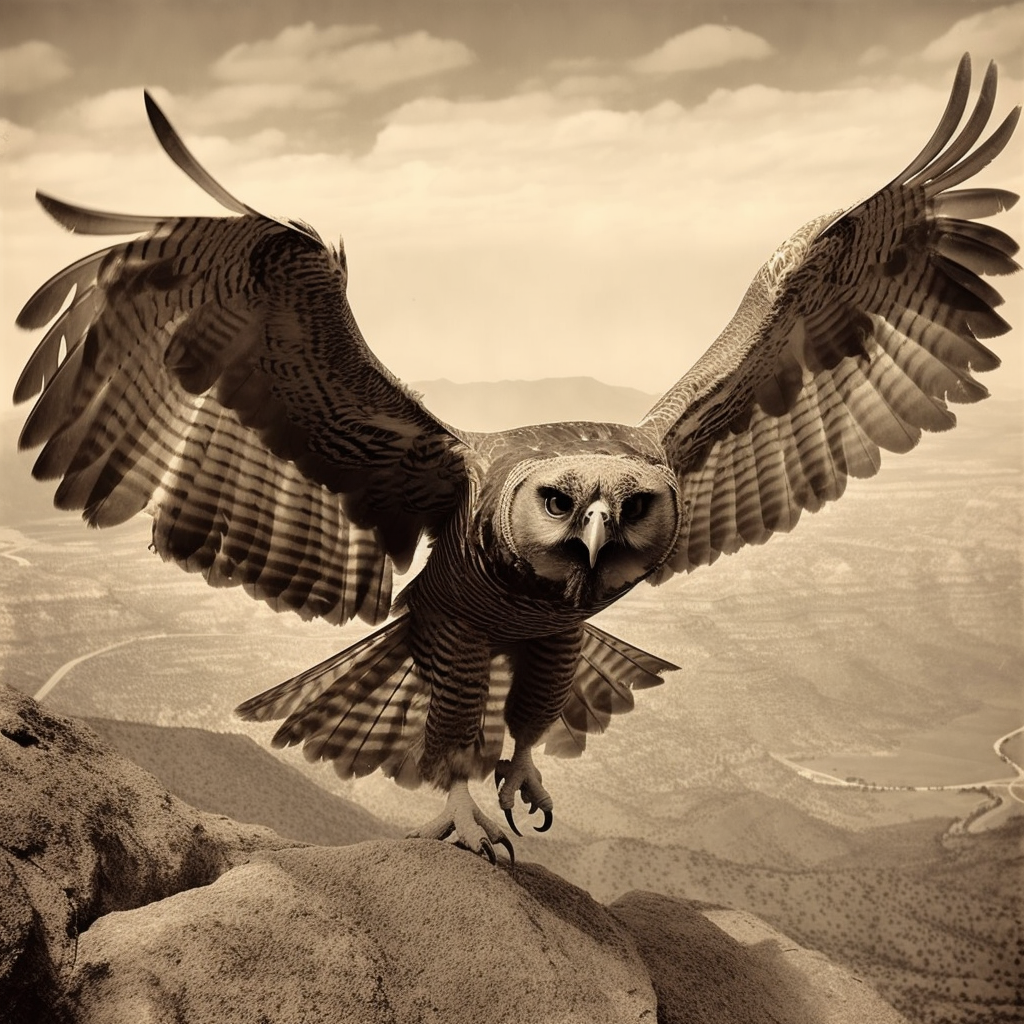
Thunderbird
The Thunderbird is a legendary creature from the mythology of various indigenous peoples of North America. It is often depicted as a large bird with magnificent feathers and powerful wings.
In some traditions, the Thunderbird is described as having the body of an eagle, but with the head of a beakless, owl-like bird. Its feathers are said to be very colorful, with hues of red, orange, and yellow. The wings of the Thunderbird are broad and powerful, capable of creating thunder and lightning as it flies.
In other traditions, the Thunderbird is described as having a more human-like appearance, with a head that resembles that of a bald eagle or hawk. It may also be depicted with talons or claws, which it uses to catch and carry prey.
Overall, the Thunderbird is a majestic and powerful creature that is typically associated with thunderstorms and other natural phenomena. Its appearance varies somewhat between different cultural traditions, but it is generally depicted as a large bird with impressive physical attributes.
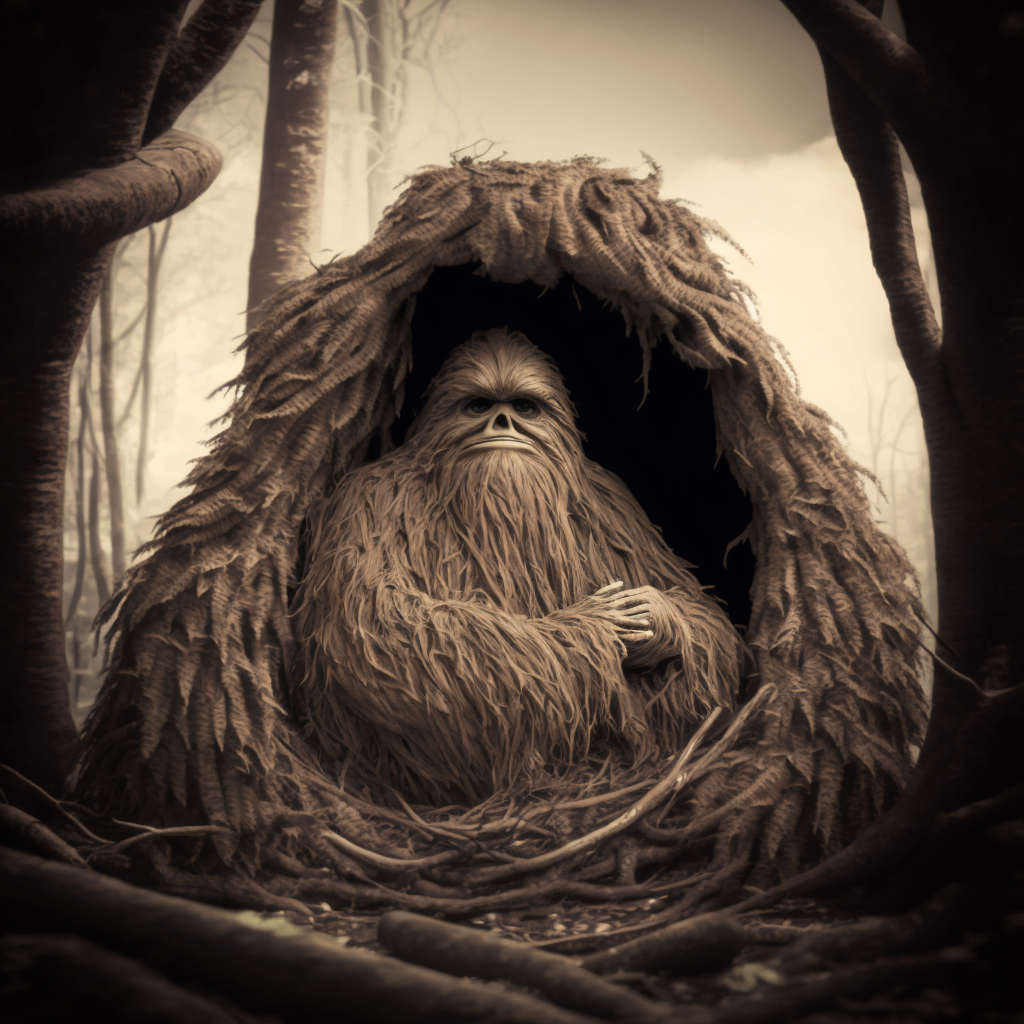
Ucu
The Ucu is a cryptid from Brazilian folklore that is said to be a giant, humanoid creature with long hair and long fingernails. According to legend, the Ucu can grow up to 3 meters (10 feet) tall and has a muscular, hairy body with human-like features.
Its face is said to be a mix between that of a human and an ape, with a prominent brow ridge, deep-set eyes, and a wide, flat nose. The Ucu’s arms are longer than those of a human, and end in sharp, claw-like nails that it uses to catch prey.
The Ucu’s body is covered in thick, shaggy fur that ranges in color from brown to reddish-brown. Its hair is said to be long and matted, often covering its face and body. Despite its large size, the Ucu is said to move quickly and with agility, making it a difficult creature to catch or track.
While sightings of the Ucu are rare, it is believed to inhabit remote areas of the Brazilian wilderness, particularly in the northeastern regions of the country.
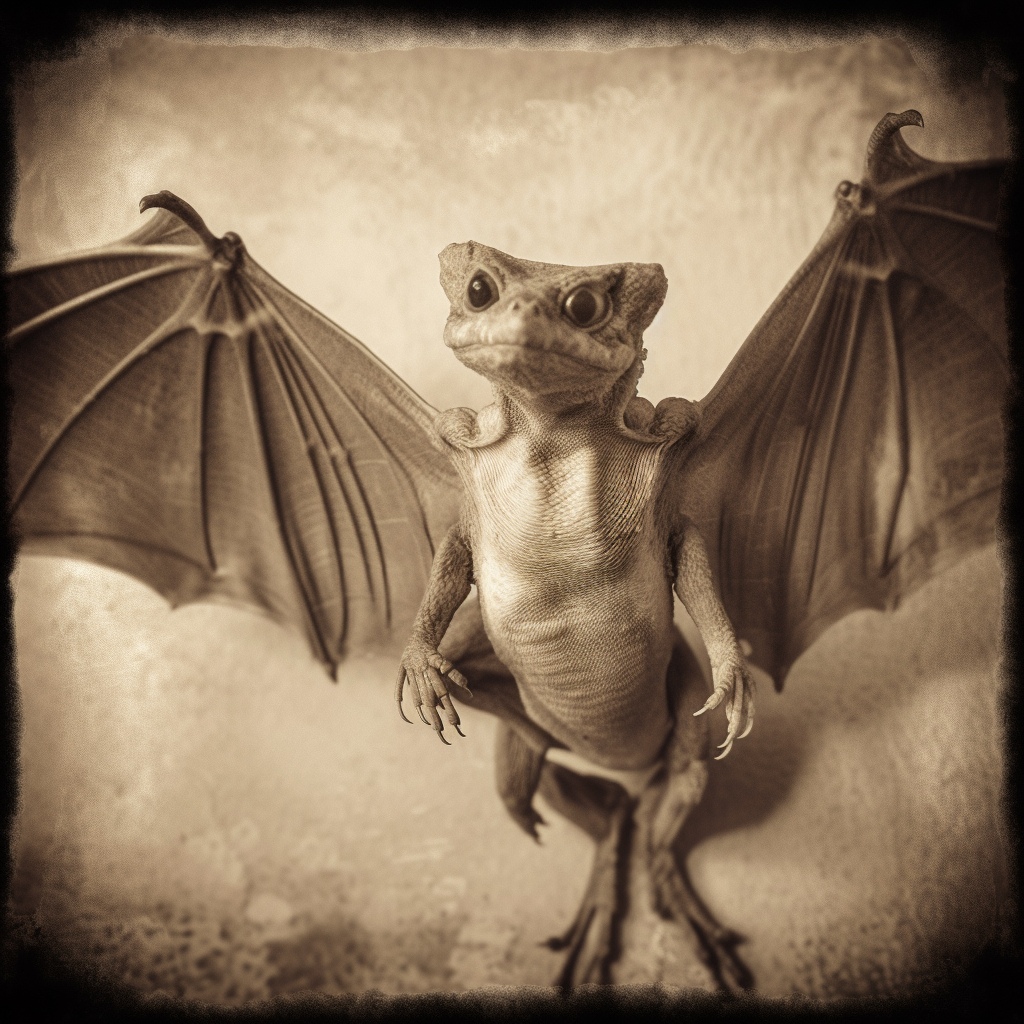
Van Meter Visitor
The Van Meter Visitor is a cryptid that was reportedly sighted in the town of Van Meter, Iowa, in 1903. According to eyewitness accounts, the creature was described as having several distinctive features.
The Van Meter Visitor was said to be a bipedal creature, standing around 7 feet tall, with a large pair of wings that spanned between 10 and 12 feet. The wings were described as bat-like, with leathery skin and a membranous structure that allowed the creature to glide through the air. Some accounts also suggest that the creature had large, glowing eyes, which emitted a bright light that could be seen from a distance.
The body of the Van Meter Visitor was said to be covered in grayish-brown scales, like that of a reptile, and it had a large, sharp beak. Some witnesses also claimed that the creature had a long, thin tail, while others reported seeing a strange, horn-like protrusion on its head.
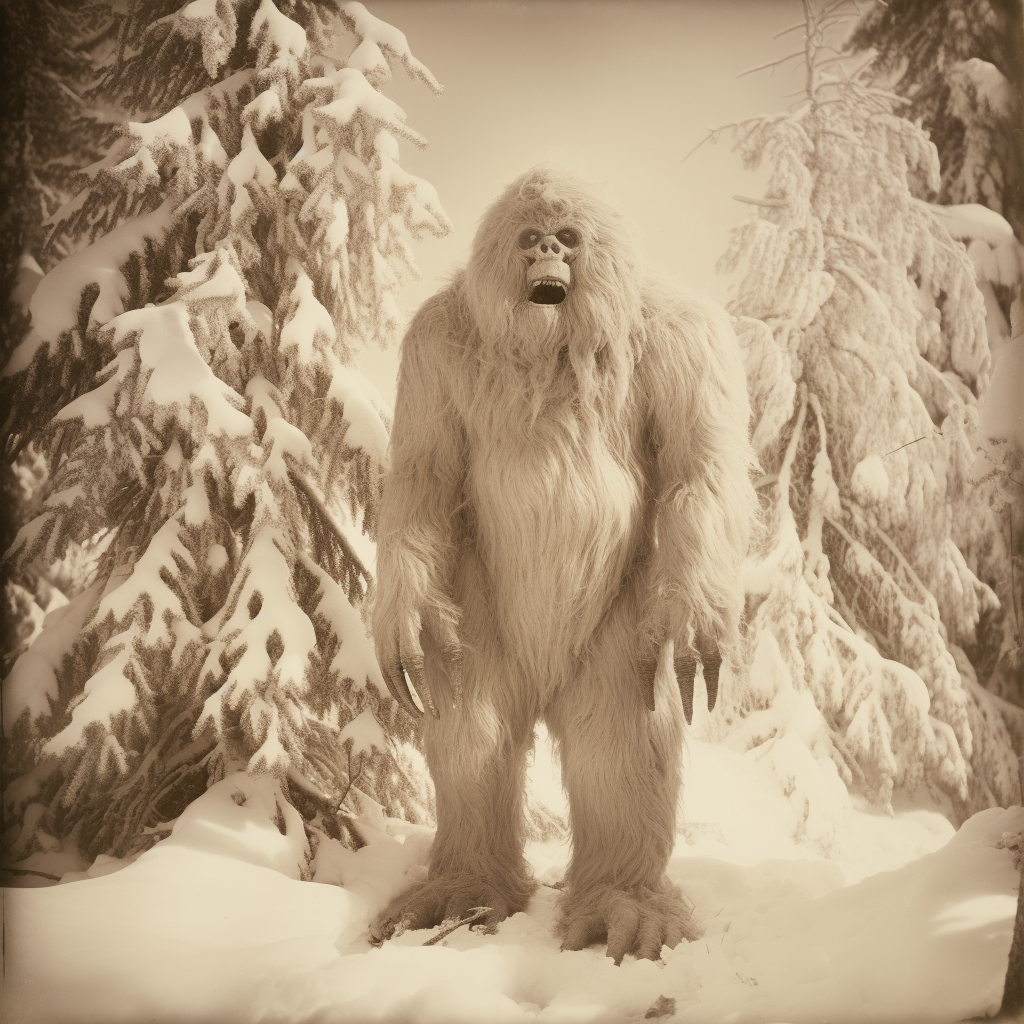
Wendigo
A Wendigo is a creature from Algonquin mythology and is also a popular figure in horror and supernatural fiction. It is typically described as a malevolent, cannibalistic spirit or monster that embodies the harshness and isolation of winter.
In its traditional form, a Wendigo is said to be an emaciated, skeletal humanoid figure with grayish skin and matted fur. Its limbs are long and thin, with elongated fingers that end in sharp claws. The creature’s eyes are often described as being sunken and glowing, giving it an eerie, otherworldly appearance.
The Wendigo’s most distinctive feature is its elongated, antler-like horns that protrude from its head. These horns can be curved or straight and are said to represent the creature’s spiritual power and status.
In popular culture, the Wendigo is often depicted as a towering, hulking creature with an insatiable hunger for human flesh. It is known for its supernatural strength and agility, as well as its ability to manipulate the minds of those it encounters and drive them to madness.
Overall, the Wendigo is a terrifying and mysterious creature, embodying the harshness and brutality of winter and the dangers that come with isolation and despair.
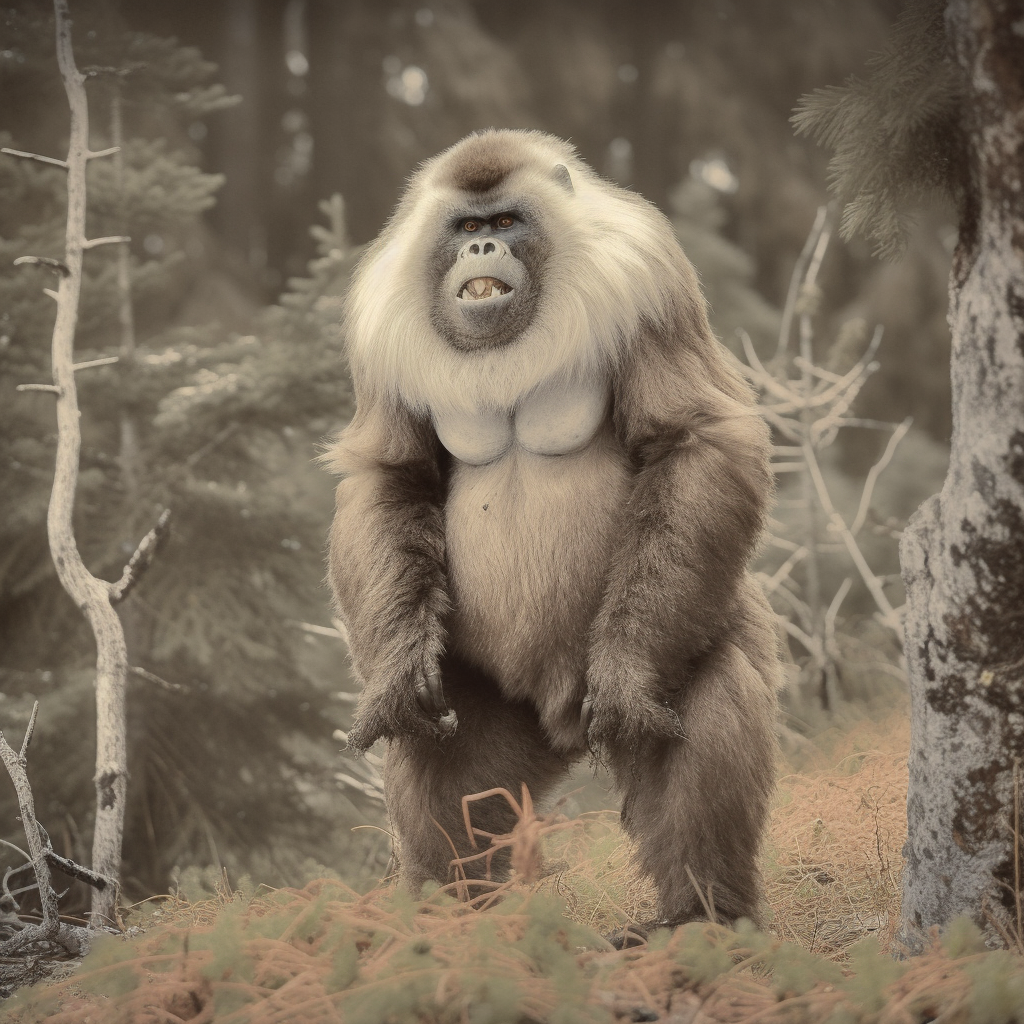
Xing-Xing
According to reports, the Xing-Xing is an unknown primate species found in the Himalayan Mountains. It is believed to be a subspecies of Orangutan or a large relative of Golden-Faced apes, living outside the established range for either species. The Xing-Xing is said to have black fur, with grayish and yellowish eyes. It is described as being incredibly tall, with a reported height of 10 feet, and highly mobile, able to move easily around the rocky terrain of the mountains. The Xing-Xing is typically found in the lower parts of the mountains, far away from any signs of civilization.

Yeti (a/k/a the Abominable Snowman)
he Yeti, also known as the Abominable Snowman, is a legendary creature that is said to inhabit the Himalayan region of Nepal, Bhutan, and Tibet.
According to various reports and sightings, the Yeti is typically described as a large, ape-like creature with shaggy, white or brown fur that helps it blend into its snowy environment. Its body is said to be muscular and stocky, with broad shoulders and a wide chest. Its face is usually described as being similar to that of an ape or bear, with a prominent brow ridge and a flat nose.
The Yeti is said to stand between 6 and 8 feet tall, with long, powerful arms that end in large, clawed hands or paws. Its feet are also described as being large and wide, with a distinctive footprint that is often used as evidence of its existence.
Despite its fearsome appearance, the Yeti is generally believed to be a peaceful and elusive creature, avoiding contact with humans whenever possible. Many of the reported sightings of the Yeti come from local Sherpas or mountain climbers who have glimpsed the creature in the distance or found evidence of its presence, such as footprints or discarded food.
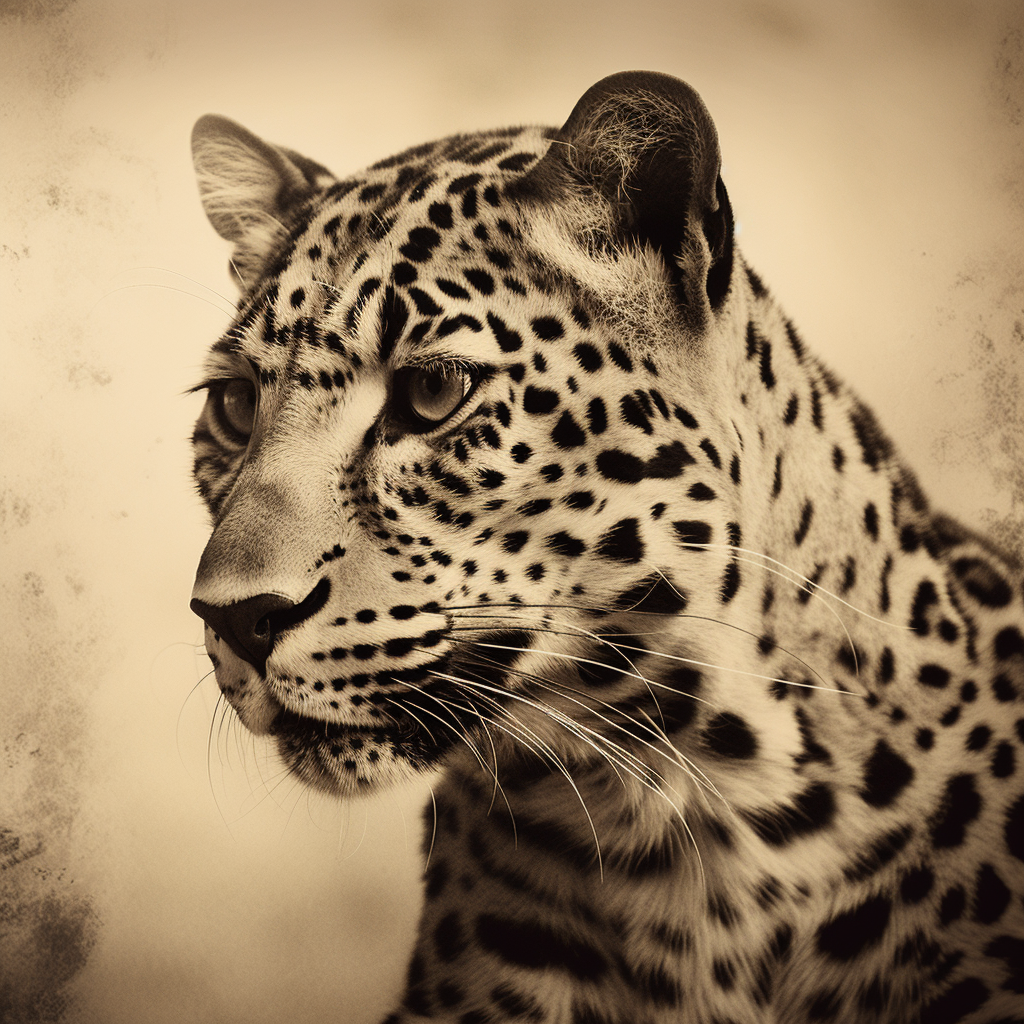
Zanzibar Leopard
The Zanzibar Leopard, also known as the Zanzibar African leopard or the Zanzibar spotted leopard, is a subspecies of leopard that is believed to be extinct. The leopard was native to the island of Zanzibar, located off the coast of Tanzania in East Africa.
Based on reports and sightings, the Zanzibar Leopard was similar in appearance to other African leopards, with a distinctive coat of black spots on a tawny yellow or golden base. However, the Zanzibar Leopard was believed to have smaller spots than other subspecies, and some reports suggest that its coat was darker in color overall.
The Zanzibar Leopard was also said to have a muscular and agile build, with a long, slender body, powerful legs, and a long tail. Its head was relatively large compared to its body, with a broad skull and powerful jaws.
Despite its impressive appearance, the Zanzibar Leopard was believed to be a shy and elusive creature, avoiding contact with humans whenever possible. The leopard was once a common sight on the island of Zanzibar, but its population declined rapidly due to habitat loss and hunting. The last confirmed sighting of a Zanzibar Leopard was in 1996, and it is now considered to be extinct.

